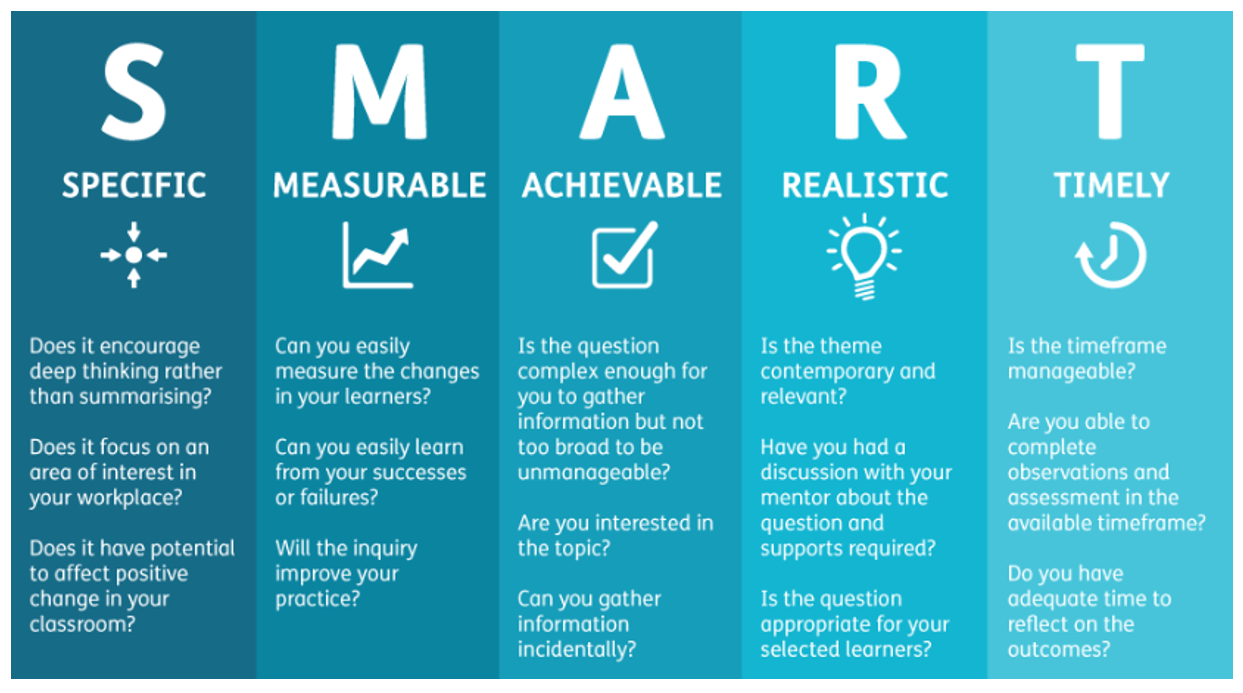
By Noah Kim
EDITION #10 – What am I learning & why is it important?
Published – 16th October 2019
Noah Kim is beginning the 2nd year of teaching after graduating from RMIT Brunswick in 2017

As you will know (and has been detailed in the article above by Kayla Kelly), all graduate teachers in Victoria need to complete a process for full registration. This is in the form of an inquiry-focused research into a self-identified area of your teaching. After completing it last year, I can attest to the phenomenal amount of growth you can achieve. The process really puts into perspective how different we are from the first day of Term 1 to the last day of Term 4! It sounds daunting and can be perceived as ‘another thing to do’ however, it requires a bit of a shift in mindset.
A true inquiry is a self-identified area of development based on reflections of your own practice. The inquiry you undertake should be something you know that you need to improve and develop as part of your daily practice, and want to take action on. What I’m trying to say is, keep your inquiry focus small, specific and easily manageable within your context. For example, if you choose to focus on something that is larger than yourself and your direct circle of impact, irrelevant to your context and arduous, then yes it may be stressful for you and feel like it is piling on top of your workload.
Here are some tips to keep your mind at ease and hopefully assist you with your VIT Inquiry:
- Think about your inquiry question with a SMART goal lens (Victorian Institute of Teaching, 2019) and choose a focus that will be quantifiable by data. As we already emphasise the use of data to inform planning, I believe it is critical to choose a topic/focus that you are going to be able to accurately measure. How are you going to show your evidence of impact and demonstrate the effectiveness of your action plan?

(Victorian Institute of Teaching, 2019)
1. Ensure you have collected different forms of data. Prior to beginning my VIT inquiry, I discussed with my mentor some of the ways I was going to assess my students and we thought about a triangulation of data. This meant that I needed to have up to three forms of data to moderate and cross-reference in order to be sure that my teaching was having a direct effect on student outcomes. For example, I was focusing on Letter/Sound ID and the link between reading outcomes, which meant I was able to use: Letter/Sound ID data, Fountas and Pinnell benchmarking, work samples and anecdotal notes. This resulted in data that was interlinked and allowed me to explain my evidence of impact on student learning.
2. Be organised! Your portfolio should be a working document that you are adding to as you go. It might be something as simple as uploading and adding your data to your document each week, however, work out a method that works for you. By staying on top of this aspect, your stress levels shouldn’t be too high – no mad rush at the end!
3. Present your portfolio efficiently and professionally. There are many different web-design sites you may utilise for your portfolio presentations such as Wix, however, I used Google Sites as I was able to use this with my Department email and was also going to be uploading student data which needed to remain in a confidential domain. Initially, my presentation contained numerous links to the different parts of the AITSL standards, although upon receiving feedback from an experience colleague, she recommended that I structure the presentation in the stages of inquiry. Within the stages of inquiry I wrote the AITSL standards I had addressed for each part which gave the panel a visual reference which ensured I had met each standard of AITSL.
Overall, continually remind yourself that the purpose of inquiry is to reflect on your professional development and demonstrate your understanding of how to plan and implement your professional needs. If something does not work, or a student does not show as much growth as anticipated, think about it with a different mindset. Reflect on why these things have happened and include them in your portfolio as this will consolidate your understanding of the inquiry cycle.
References
Victorian Institute of Teaching 2019, Formulating an inquiry question, viewed 6 August 2019, https://www.vit.vic.edu.au/news/news/2019/formulating-an-inquiry-question
